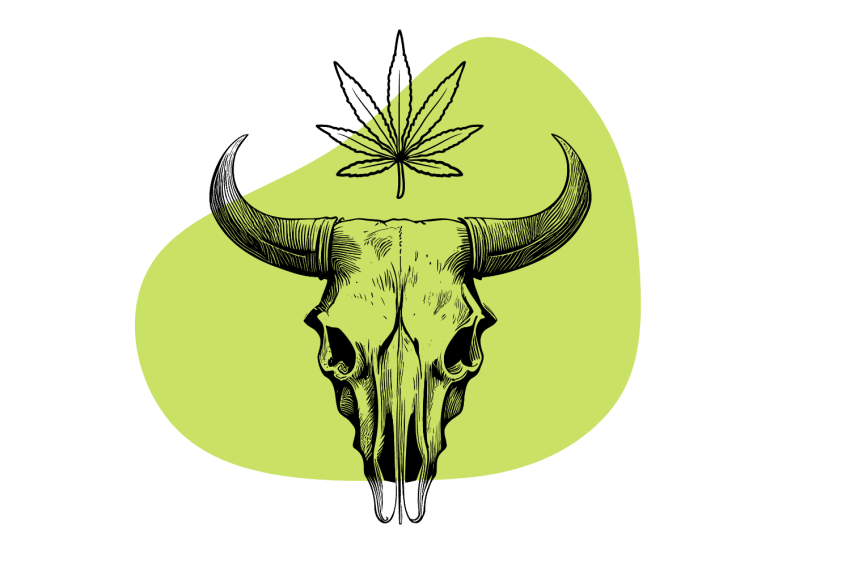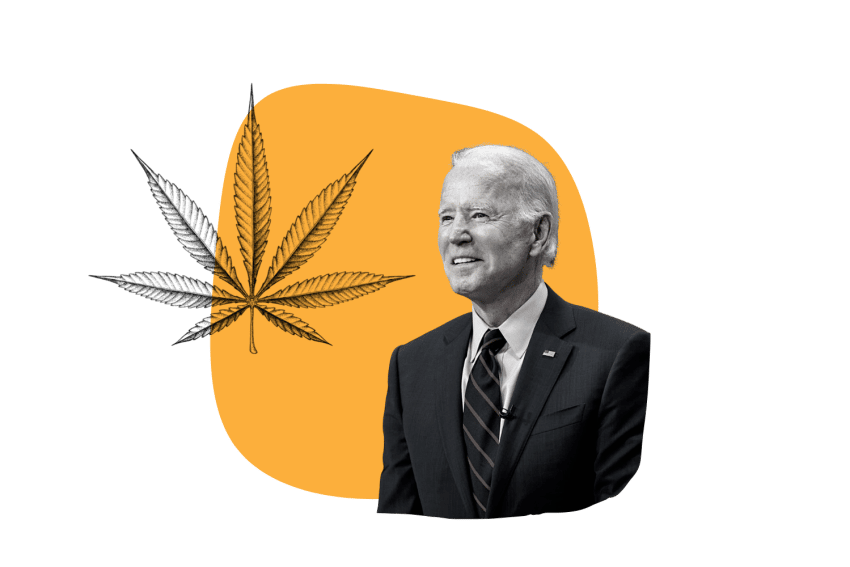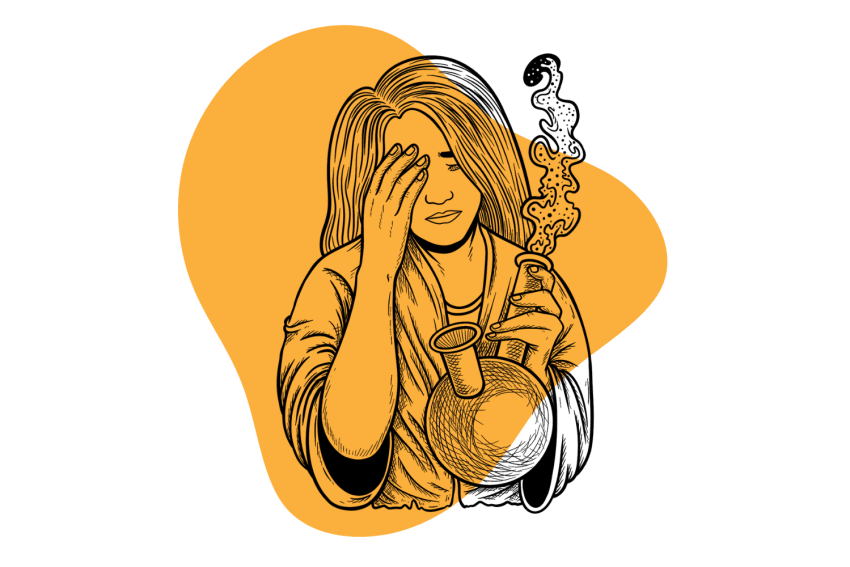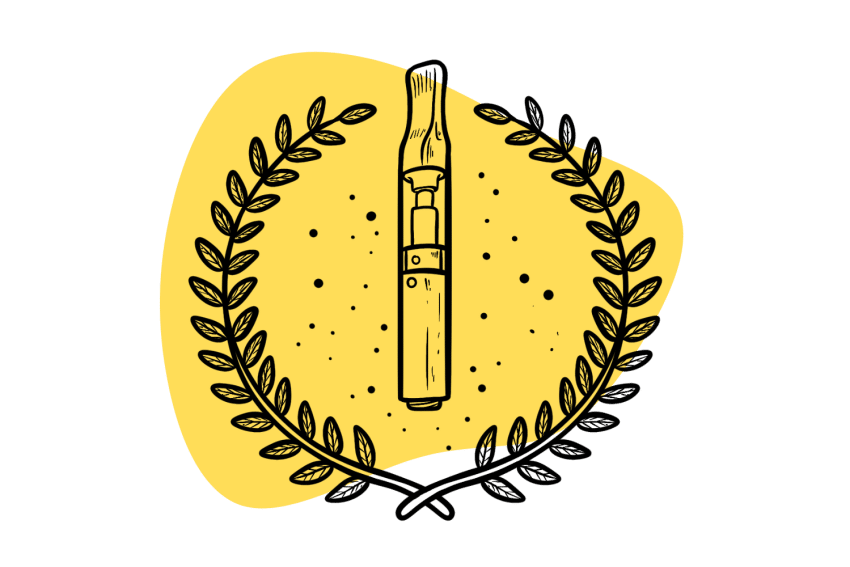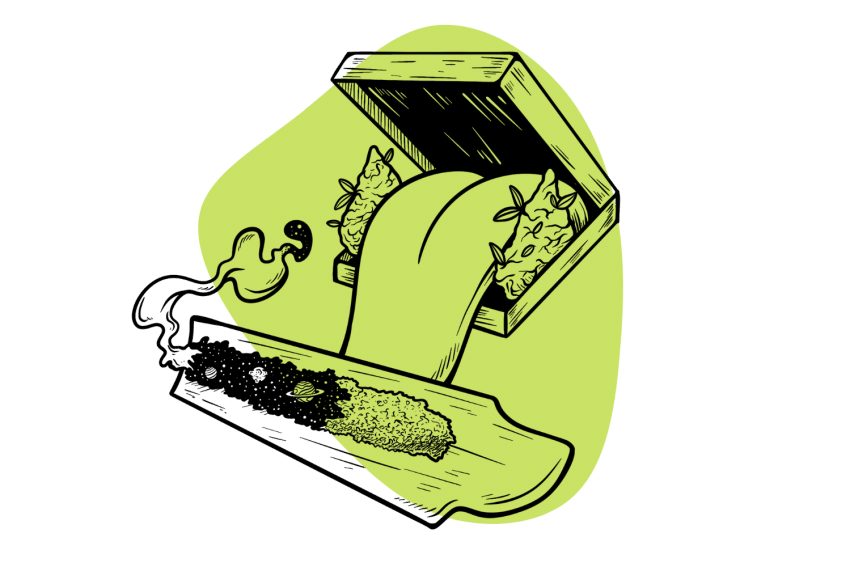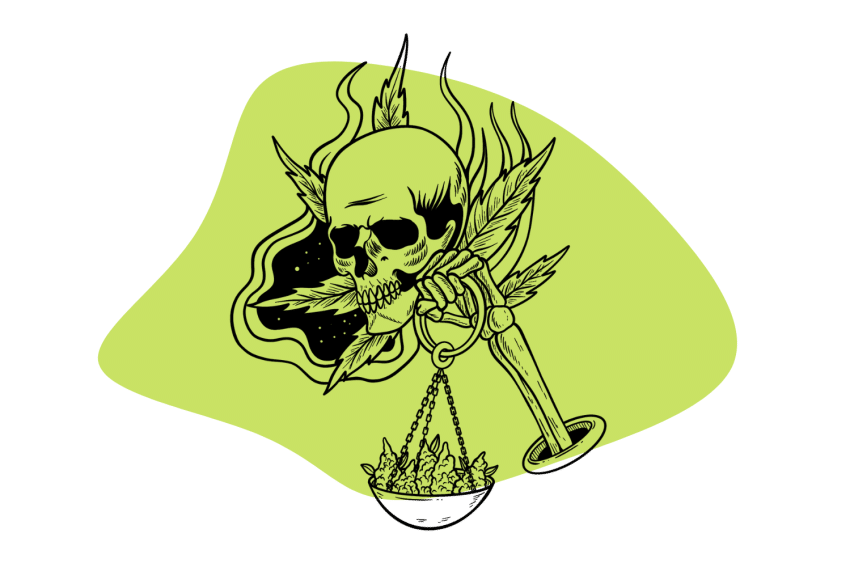Buying Weed? Don’t Overpay: Here Are the Average Costs, by State
Don’t overpay for weed — here’s a look at the average cost and what drives the prices up.
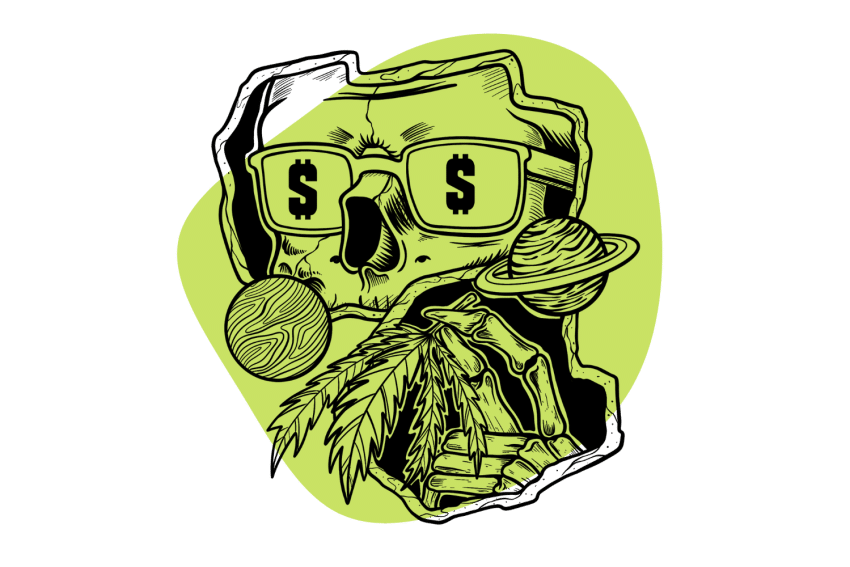
Understanding weed pricing can be as complex as the herb itself — prices vary a lot from vendor to vendor and even city to city.
This article will help you find your way by walking through the average costs across the US, along with the factors that affect the cost and how you can save money without sacrificing quality.
Related: Cannabis 101 | Where to Buy Cannabis Seeds | How to Grow Weed
Measurements for Weed
There are two main measurement units for weed — the gram and the ounce — and between them lie the eighth, quarter, and half ounces.
Here are the standard measurements and their equivalent in grams:
- 1 gram of weed (0.035 oz)
- An eighth of weed (3.5 g)
- A quarter of weed (7 g)
- A half-ounce of weed (14 g)
- An ounce of weed (28 g)
- A quarter pound of weed (114 grams)
- A half pound of weed (227 grams)
- A pound of weed (454 grams)
A gram is the minimum amount you can buy and is enough for one or two joints. However, you can make a joint with as little as a quarter gram. Meanwhile, an ounce of weed is enough for about 60 joints.
With the weed measurements out of the way, let’s explore pricing in the US.
Average Costs for Weed In the US
Weed costs depend on many factors, including quality, location, and availability. As a result, the pricing can be very inconsistent across states. Nevertheless, we can make an average that, while not exact, will give you an idea of the costs.
The following table has the up-to-date average costs for different measurements of weed. At the end of this section, you will find a more thorough table with the average weed prices in every state that has legalized or decriminalized it.
| Weed Measurement | Gram Conversion | Average Costs | Average Cost Per Gram |
| Gram | 1 gram | $9–$12 | $10/gram |
| Eighth | 3.5 grams | $30–$45 | $10/gram |
| Quarter | 7 grams | $50–70 | $9/gram |
| Half-ounce | 14 grams | $120–$140 | $9/gram |
| Ounce | 28 grams | $200–$300 | $9/gram |
| Quarter Pound | 114 grams | $600–$900 | $6/gram |
| Half Pound | 227 grams | $1200–$1400 | $5/gram |
| Pound | 454 grams | $2200–$2400 | $5/gram |
Average Costs for a 1 Gram of Weed
A gram is generally the smallest amount of weed you can buy if we don’t include pre-rolls. You can find it as whole flower buds or loose shake — tiny buds and broken leaves.
The average cost for a gram of weed is around $9 to $12, but higher-quality strains can sell for closer to $15. However, the overall price varies a lot from place to place. In Oregon, a gram is as little as $6.60; in Virginia, the price is $19.
Average Costs for an Eighth of an Ounce of Weed
An eighth of weed is enough for about six joints and is much more convenient than buying single grams. It can also save you money because it’s easier to measure.
The average cost for an eighth of weed is between $30 and $45, but higher-quality strains can go as high as $60 or even more.
Once again, Oregon and Washington have the lowest average for an eighth, at less than $24. Compare that to Washington, DC, where the average cost is $63.
Average Costs for a Quarter-Ounce of Weed
A quarter-ounce is about 7 grams, enough for 12–14 joints, and is excellent for both seasoned and casual users.
The price range for a quarter of weed stands between $65 and $75, but there are outliers, as always. In the Pacific Northwest, you can purchase a quarter for less than $50; in places like Utah and North Dakota, the price exceeds $80.
Average Costs for a Half-Ounce of Weed
A half-ounce equals 14 grams of weed or about 24 joints. While it doesn’t seem like a lot, you’ll need a place to store it properly to keep it from getting stale.
You’ll generally find a half-ounce of weed for $120 to $140. There are exceptions, but in most states, $130 is usually enough to purchase this amount.
Average Costs for an Ounce of Weed
A full ounce of weed (AKA “a zip of weed“) can give you between 50 and 60 joints, depending on how you make them. In most state laws, an ounce is the maximum amount of weed you can carry.
This is where the differences in location — and regulations — are most visible. For instance, the average price for an ounce in Colorado is a few cents below $200. Meanwhile, in Washington, DC, the same amount is a few bucks over $500.
The average price for an ounce of weed is between $200 and $300.
Full List of Average Weed Costs Across the US
Below is a table listing every US state with weed laws and the corresponding cost for each measurement. The table also includes its legal status, which we discuss further below.
Note, however, that this list doesn’t include CBD-only states.
| State | Legal Status | Avg Cost per Gram | Avg Cost per Eighth | Avg Cost per Quarter | Avg Cost per Half-Ounce | Avg Cost per Ounce |
| Alabama | Medical use | $11.50 | $38.75 | $60.00 | $113.33 | $177.18 |
| Alaska | Fully legal | $10.82 | $37.88 | $75.76 | $151.52 | $303.04 |
| Arizona | Fully legal | $8.28 | $28.96 | $57.93 | $115.86 | $231.71 |
| Arkansas | Medical use | $8.31 | $29.08 | $58.16 | $116.31 | $232.62 |
| California | Fully legal | $8.93 | $31.25 | $62.50 | $125.00 | $250.00 |
| Colorado | Fully legal | $7.14 | $24.99 | $49.97 | $99.95 | $199.89 |
| Connecticut | Fully legal | $10.03 | $35.12 | $70.24 | $140.49 | $280.97 |
| Delaware | Fully legal | $9.35 | $32.74 | $65.48 | $130.95 | $261.90 |
| Florida | Medical use | $8.06 | $28.22 | $56.45 | $112.89 | $225.78 |
| Hawaii | Medical use | $9.49 | $33.22 | $66.45 | $132.89 | $265.78 |
| Illinois | Fully legal | $10.61 | $37.12 | $74.24 | $148.47 | $296.94 |
| Louisiana | Decriminalized | $11.42 | $30.00 | $66.67 | $111.25 | $296.72 |
| Maine | Fully legal | $8.41 | $29.42 | $58.84 | $117.69 | $235.37 |
| Maryland | Fully legal | $10.10 | $35.37 | $70.73 | $141.47 | $282.93 |
| Massachusetts | Fully legal | $10.18 | $35.62 | $71.24 | $142.48 | $284.96 |
| Michigan | Fully legal | $9.74 | $34.07 | $68.15 | $136.30 | $272.59 |
| Minnesota | Fully legal | $9.99 | $34.97 | $69.94 | $139.88 | $279.75 |
| Mississippi | Medical use | $13.89 | $32.50 | $71.00 | $125.00 | $262.30 |
| Missouri | Fully legal | $13.25 | $35.00 | $55.00 | $136.67 | $262.90 |
| Montana | Fully legal | $8.69 | $30.42 | $60.83 | $121.66 | $243.32 |
| Nevada | Fully legal | $8.37 | $29.31 | $58.62 | $117.23 | $234.46 |
| New Hampshire | Medical use | $10.64 | $37.23 | $74.46 | $148.91 | $297.82 |
| New Jersey | Fully legal | $10.68 | $37.37 | $74.73 | $149.46 | $298.92 |
| New Mexico | Fully legal | $8.13 | $28.47 | $56.94 | $113.89 | $227.77 |
| New York | Fully legal | $9.67 | $33.86 | $67.72 | $135.43 | $270.86 |
| North Dakota | Decriminalized | $11.72 | $41.03 | $82.06 | $164.11 | $328.22 |
| Ohio | Medical use | $8.32 | $29.12 | $58.23 | $116.47 | $232.93 |
| Oklahoma | Medical use | $14.00 | $42.50 | $50.00 | $147.50 | $235.92 |
| Oregon | Fully legal | $6.65 | $23.29 | $46.57 | $93.15 | $186.29 |
| Pennsylvania | Medical use | $10.03 | $35.10 | $70.21 | $140.42 | $280.83 |
| Rhode Island | Fully legal | $9.11 | $31.90 | $63.80 | $127.59 | $255.18 |
| South Dakota | Medical use | $17.10 | $40.00 | $69.05 | $138.10 | $269.20 |
| Utah | Medical use | $11.50 | $41.00 | $83.33 | $120.00 | $208.50 |
| Virginia | Fully legal | $19.17 | $45.00 | $77.00 | $136.36 | $253.63 |
| Vermont | Fully legal | $10.78 | $37.74 | $75.47 | $150.95 | $301.89 |
| Washington | Fully legal | $6.81 | $23.84 | $47.67 | $95.35 | $190.69 |
| Washington, DC | Fully legal | $18.08 | $63.27 | $126.55 | $253.09 | $506.18 |
| West Virginia | Medical use | $9.00 | $31.51 | $63.02 | $126.04 | $252.08 |
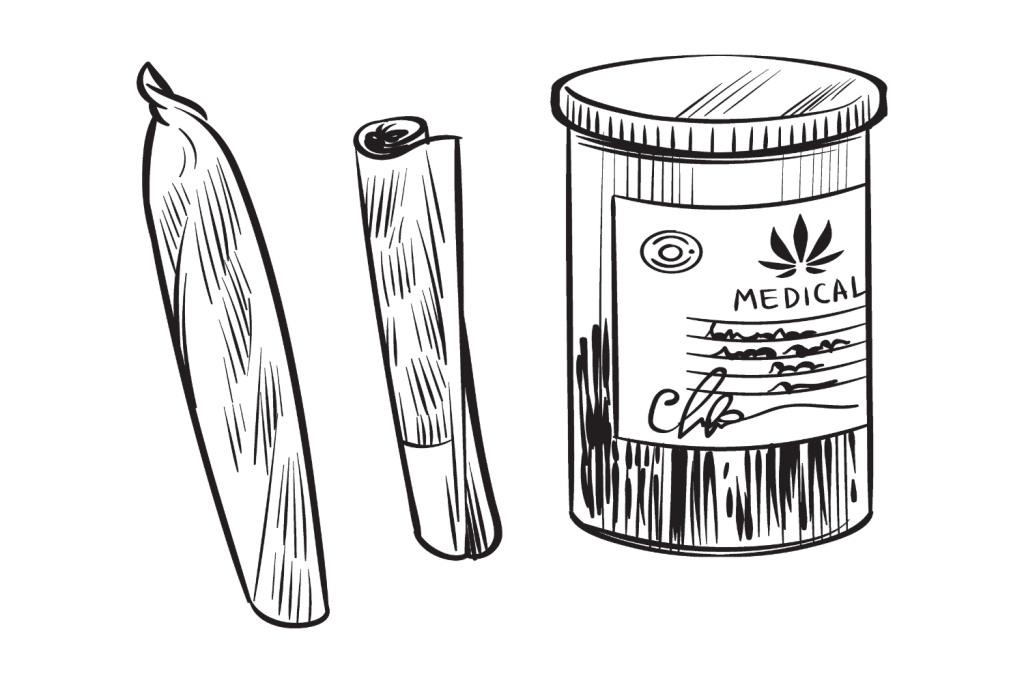
Factors That Affect Weed Costs
As you have seen, prices vary significantly from state to state. However, you don’t have to move to another location to see the differences — you’ll see them even within the same city. These variations are due to many factors, including the following.
1. Quality
One of the most important factors is the quality of the weed. High-quality weed requires more work and contains more THC; as a result, it’s more expensive.
However, that quality may result from tight state laws that make prices jump, but more on that later.
2. Location
The US West Coast has a better climate for growing weed, and legalization has allowed the market to flourish, along with new technologies to help farming. As a result, weed is easier and cheaper to produce.
Meanwhile, in less ideal locations, production can’t compete, and in some cases, farmers have to grow expensive strains that better adapt to the environment. It isn’t impossible to grow weed in Alaska, but it’s more difficult than doing it in California.
This is the case for the difference in price between outdoor and indoor weed production. Outdoor farming can be much less expensive than indoor, as it doesn’t require dedicated lighting, warming, or a water supply.
3. Availability
Availability is another issue affecting weed prices— a great example of supply and demand. Prices may jump temporarily when there’s not enough weed to go around, only to plummet when there’s more than enough.
4. Overhead Costs
Business owners have overhead costs associated with running a store. If they are also producers, they must cover the costs of running a weed farm, which can be expensive on its own.
Profits keep a business afloat, so weed prices have to cover the associated costs and then some.
5. Taxes
If you wonder why weed costs differ wildly from state to state, a major reason is the prevalence of taxes. In some places, the state tax on cannabis exceeds 15%, which translates directly to higher prices.
Moreover, Section 280E of the Internal Revenue Code prevents weed retailers from taking business tax deductions. This means that such retailers have to pay higher tax rates, further reducing profits.
6. Regulations
While legalization has made weed more accessible to all, many drawbacks can affect weed prices. As the matter depends on each state, there are specific regulations that every business must follow to be allowed to produce and sell weed.
In some states, these regulations are permissive, while in others, they are very strict, requiring businesses to make large investments to meet them. All those costs translate to higher prices.
On the other hand, some states offer subsidies to help the industry, decreasing prices.
And as mentioned, taxation plays a big part in increasing prices.
Cost Differences Between Forms of Weed
Cannabis comes in many forms other than flower, each with different costs.
Edibles include any weed product you can eat, such as cookies, chocolates, gummies, or drinks. On average, these products cost $20 or more, depending on the content of THC or CBD.
Then, there are pre-rolls, which are pre-made joints. They contain flower and sometimes other additives for a better experience, but they’re more expensive than just rolling them yourself.
Liquid extracts are the most expensive because they contain more CBD or THC. The stronger concentrates can cost $30 or more per gram, but their potency can be worth the extra price.
Finally, there are vape cartridges, also called vape carts. They carry one gram or less of weed oil, which becomes a vapor when the included atomizer heats it. They are simple and convenient, but they can cost up to $40 or more per cartridge, depending on the size.
Is High-Quality Weed Worth the Extra Price?
Yes, as long as you can afford it. Besides price, the main difference between high-quality and medium-quality weed is the amount of THC. As a result, high-quality weed is more potent.
In addition, high-quality weed has more consistent effects due to stricter production and could be more efficient than medium or low-quality weed. Also, premium cannabis has more appealing flavors and aromas.
In the end, the answer depends on your preferences and budget. It wouldn’t be a bad idea to buy a small amount to check it out and decide whether the investment is worth it.
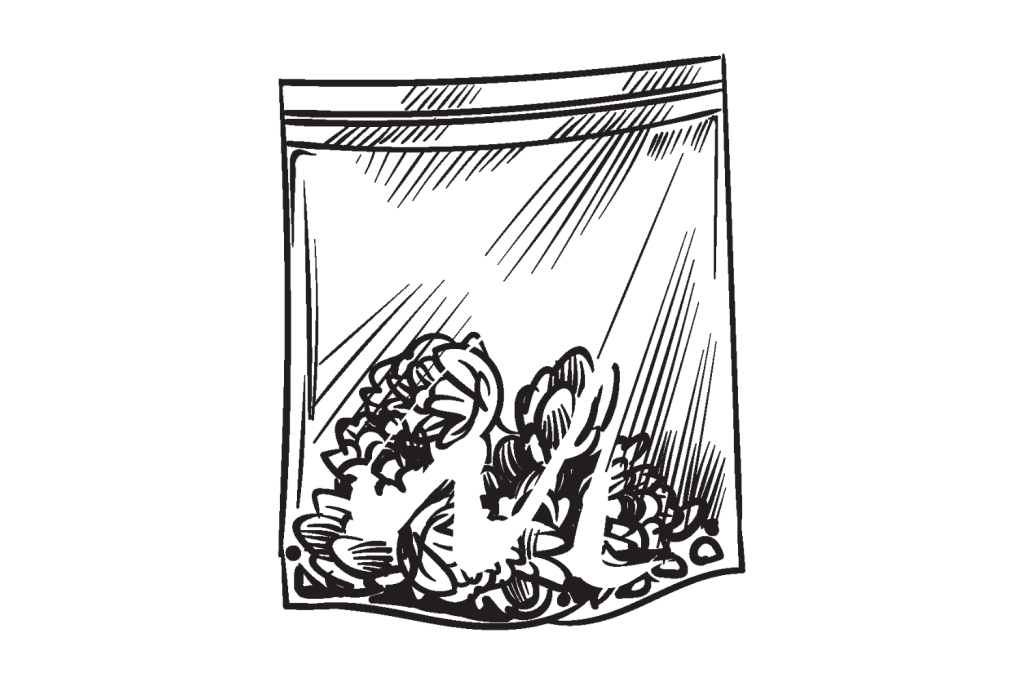
FAQs About the Cost of Weed
We know there are always more questions, so here are some common ones and the answers.
1. How much does an ounce of top-quality weed cost?
The average price for an ounce of top-quality weed is about $330, significantly higher than the average $266 for medium-quality cannabis.
2. What is the most expensive form of weed?
The most expensive form of weed is cannabis caviar, which sells for $1400 per ounce and contains high amounts of THC. It’s made of bud, cannabis oil, and kief.
3. Which are the best value-for-buck weed strains?
White Widow, Critical Kush, and G13 are the best value-for-buck weed strains. These are cheap but still have high amounts of THC, so they should provide a good experience.

